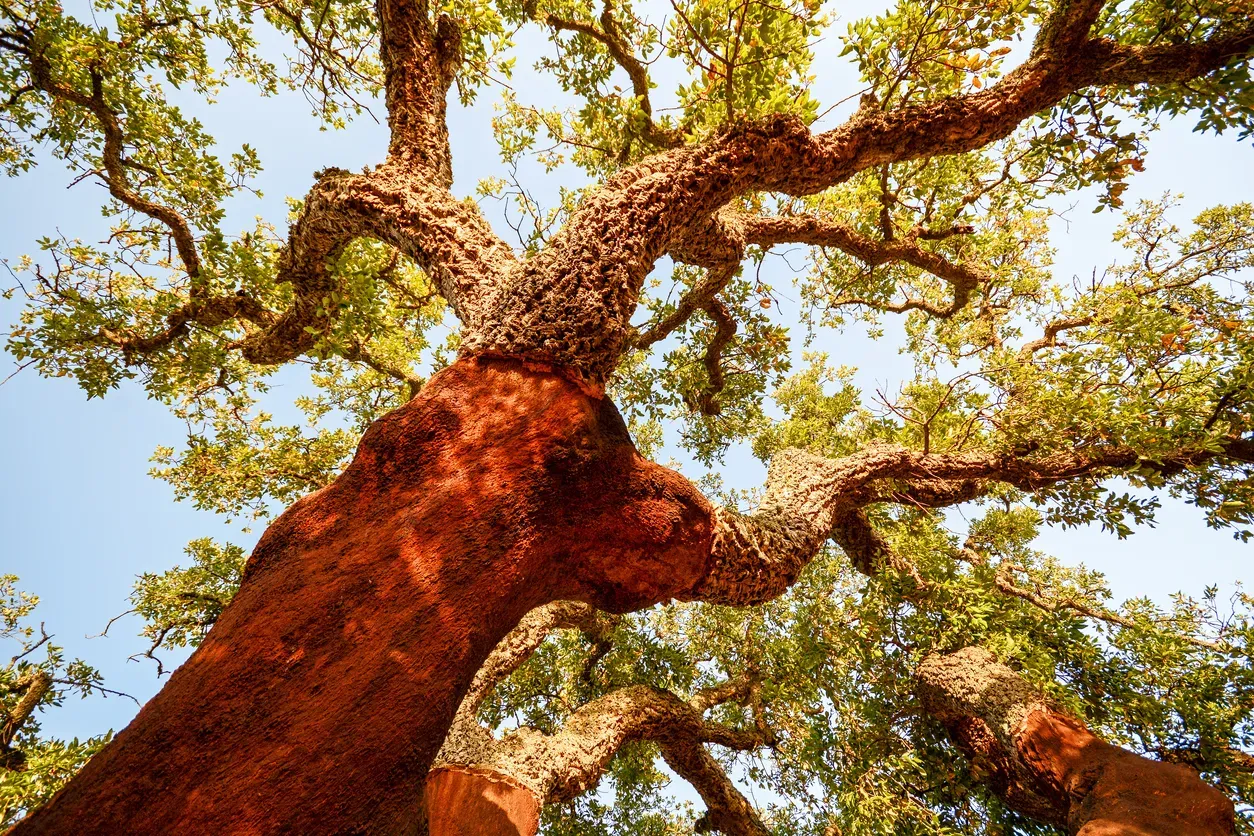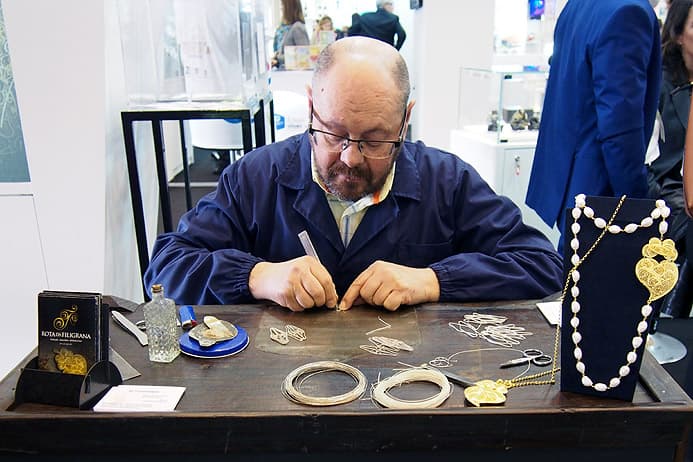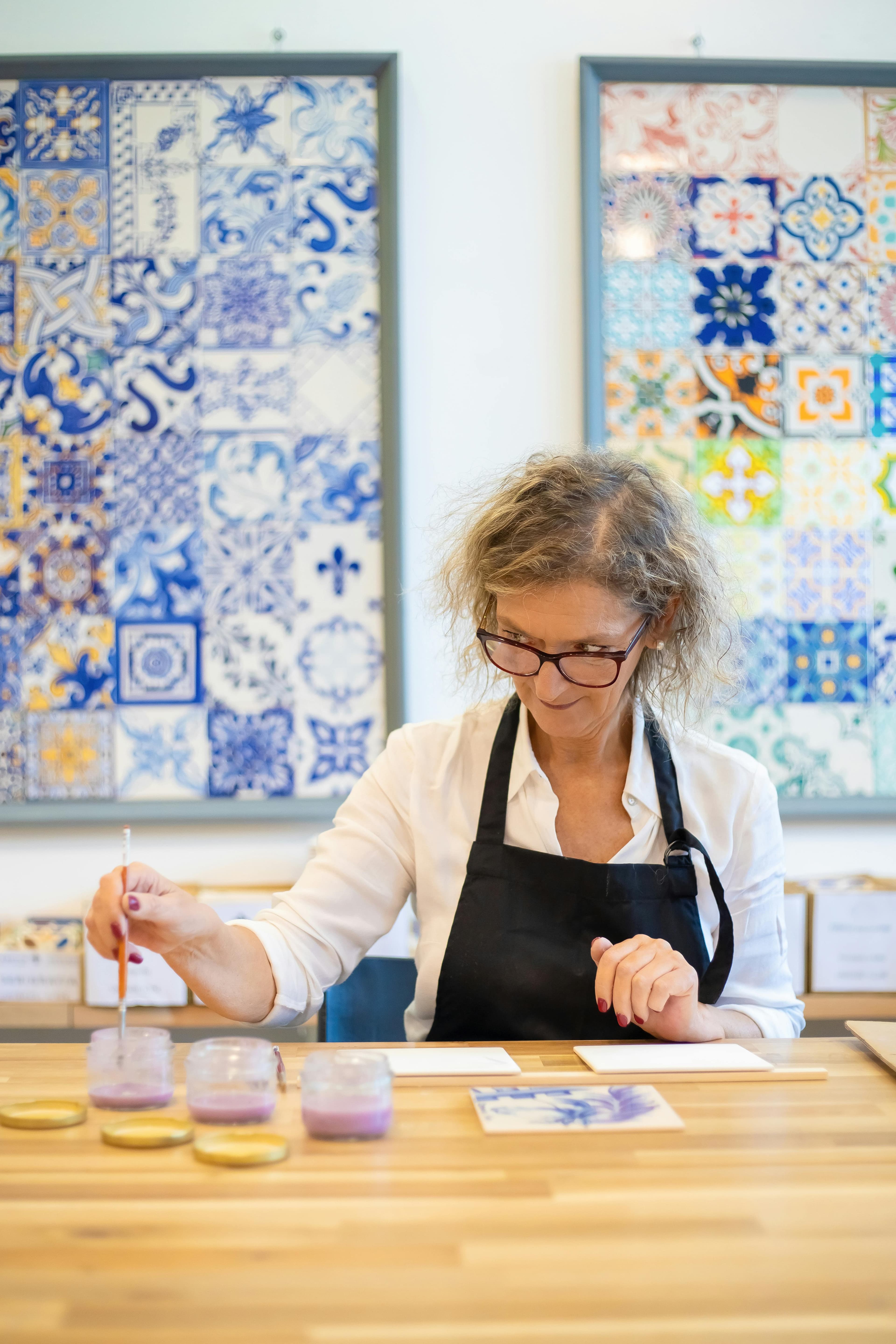
Cork is not just a material ; it is a true natural and cultural treasure of Portugal ! A symbol of sustainability, ingenuity, and refined craftsmanship, it lies at the heart of national identity and features in our homes in both traditional and modern forms (especially among the Portuguese). This article takes you on a journey to discover cork in all its splendour: its history, culture, extraction, and contemporary applications, from the classic wine stopper to the most innovative design creations.
An Ancient History and a Unique Material
Cork is primarily harvested from the bark of the cork oak, an emblematic tree of the Mediterranean regions, and mainly of Portugal, which produces around 50% of the world’s cork (quite remarkable !). This natural material has been used since Antiquity, notably for insulation, footwear, fishing floats, and, of course, wine stoppers. Cork’s uniqueness lies in its exceptional properties: lightness, water resistance, flexibility, and thermal and acoustic insulating capacity.
Portugal has developed an exceptional expertise around this material. Cork oak forests, known as montados, are precious ecosystems where fauna, flora, and human activity coexist harmoniously. Harvesting the bark, which occurs every 9 to 12 years, does not harm the tree and allows cork production for over a century.
Amorim : The Giant of Portuguese Cork
If cork is now globally recognised, it is also thanks to major players such as Amorim, the largest cork producer in Portugal and worldwide! Founded in the 19th century, this company has successfully combined tradition and innovation, transforming cork into technical materials, design solutions, and everyday objects (handbags, lamps…). Thanks to Amorim and other local producers, Portuguese cork has become a symbol of quality, sustainability, and creativity !
From Natural Material to Design Object
Cork is not limited to wine stoppers! In recent years, it has found its way into interior decoration, fashion, and even technology. It appears in rugs, wall coverings (excellent insulators), bags, shoes, and designer furniture. Its unique texture, natural warmth, and eco-friendly qualities appeal to designers and consumers concerned with sustainability.
But the magic of cork also lies in its artisanal production… Each product results from meticulous work to create unique pieces.

© Istock
Cork : A Living Heritage
Beyond its practical and decorative value, cork is a true cultural and environmental heritage in Portugal. Cork oak forests play a crucial ecological role: they protect the soil, host numerous animal and plant species, and contribute to the fight against climate change by storing carbon.
Visiting a cork forest or a production workshop allows you to immerse yourself in Portuguese history and culture, understand the life cycle of this material, and, naturally, admire the artisans’ work that keeps this tradition alive.
Tips for Discovering Cork in Portugal
Where to see cork ? Mainly in the Alentejo and Central regions. Here you can find forests, workshops, and museums dedicated to cork.
Guided tours and workshops : Some companies offer production visits and creative workshops, allowing visitors to experience working with cork (a fun and educational activity!).
Cork is far more than a simple material : it is a window into Portuguese history, culture, and innovation. It connects the forest to everyday objects, combining sustainability, aesthetics, and ancestral know-how. Discovering Portuguese cork is to understand a national treasure that continues to inspire the world !
Share this article
Suggested articles

Meeting the Leather and Wood Artisans of Portugal
Portugal is a country where craftsmanship is far more than a profession: it is a true tradition, passed down from generation to generation ! Among its most emblematic skills, leather and woodwork stand out strongly.

Filigree Art, Portuguese Gold and Silver Jewellery
Portugal boasts a rich artisanal heritage, and among its treasures, filigree art shines for its finesse, delicacy, and timeless elegance ! Filigree is an ancestral jewellery technique that involves working gold or silver into extremely fine threads to create intricate patterns.

Traditional Pottery of Estremoz
The town of Estremoz, situated in the heart of Alentejo, is renowned for much more than its castles and striking white marble! It is home to an ancient craft: traditional pottery. This millennia-old art, passed down through generations, reflects the history, creativity, and expertise of local artisans.

Madeira Embroidery and Viana Lace – A Preserved Craft
Portugal is full of artisanal traditions that reflect its rich cultural heritage and the skills passed down through generations. Among these treasures, two techniques stand out for their delicacy, beauty, and let’s be honest, their poetic charm: Madeira embroidery and Viana lace.

Azulejos: the Art of Portuguese Ceramics Through the Centuries
In Portugal, you only need to look up to see azulejos. These glazed ceramic tiles decorate the façades of houses, churches, palaces, train stations, and even some metro stations. Their blue and white shine has become one of the country’s most recognizable symbols. But behind their beauty lies a long and rich history, shaped by cultural exchanges, technical innovations, and artistic evolution.


